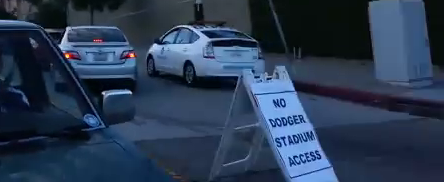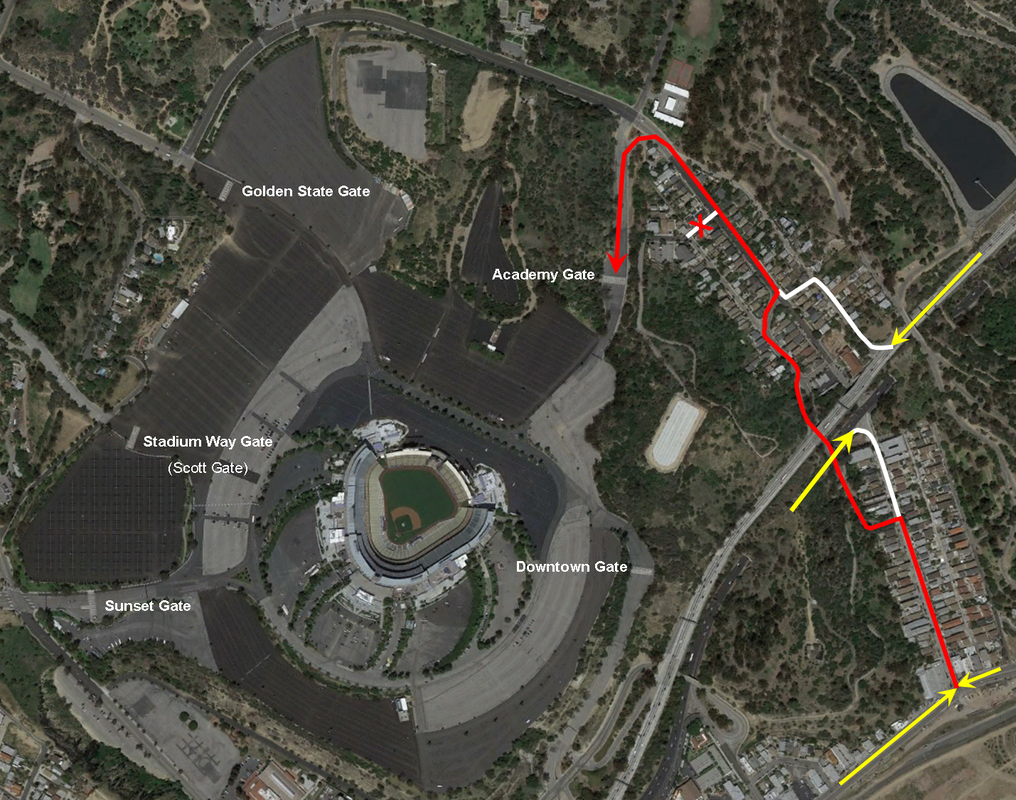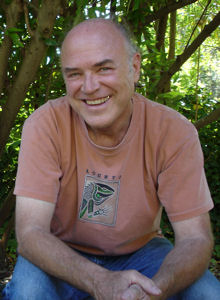Lest anyone thinks that this blog is about the Dodgers as a baseball team, which is the pride of Los Angeles, rest assured: it is not; rather, it is about the imperial attitude of the Dodgers management toward the Solano Canyon community and the lack of civic responsibility on the part of Councilmanic District 1 toward the very real concerns of the community. Step 1: Acknowledge the problem The first — and most critical — step in solving a problem is to acknowledge that there is, in fact, a problem to begin with. Solano Canyon is faced with not one, but two, problems on Dodger game days: traffic and noise. The noise issue is one that exists primarily on the days of Friday home games; but the traffic problem exists literally every day there is a home game — and that means 81 dates during the seven months from April 4th to October 5th in 2015. Step 2: Look at the issue The issue of why traffic is a problem for Solano Canyon on Dodger game days may be seen graphically by looking at how traffic flows to the Academy Gate of Dodger Stadium through the Solano Canyon community. This issue has been explored on these pages before; see here, here, and here. In this image, the red line is the main route through Solano Canyon to access the Academy Gate on Dodger game days. The yellow arrows show how traffic gains entrance to Solano Canyon. The upper white line is the Academy Road access from CA-110 westbound and the lower white line is the Solano Avenue access from CA-110 eastbound. Altogether, more than 62% of the total lengths of these streets is used for stadium access, despite the provision in the Dodgers' Conditional Use Permit (CUP) "... that only short stretches of a few local residential streets will be directly utilized and hence fewer residential property owners will be inconvenienced by traffic ...". [Emphasis mine] "... only short stretches of a few local residential streets will be directly utilized and hence fewer residential property owners will be inconvenienced by traffic ..." — from the Dodgers' Conditional Use Permit, 1960 Step 3: Do some research In 1996, neighbors in the Echo Park community argued that stadium traffic 'overwhelmed' their community. That year, attendance at Dodger games was 3.2 million people. What happened? Dodgers owner Peter O'Malley (son of Walter O'Malley, who brought the Dodgers to Los Angeles in 1958) agreed to close the Scott Gate. The gate remained closed entirely for 11 years, until 2007, and partially until 2013 (see below). In 2006, attendance at Dodger games was 3.8 million; and in 2014, it was still at 3.8 million. In 2007, when the Scott Gate was reopened, team officials argued that the Dodgers had a unilateral right to open the gate. The rationale for that bizarre statement was not explained at the time. Ed Reyes, City Councilmember for CD-1, said at the time that he would prefer the gate remained closed. Eric Garcetti, City Councilmember for CD-13 — and now Mayor — said, "We don't want a return to the '80s, when people couldn't get out of their homes." The Dodger management, under owner Frank McCourt — a man well-known for his hubris — then agreed that they would use the Scott Gate only for egress from the stadium — but not for ingress — and that they would use the gate for ingress only if the game were sold out, meaning that a larger-than-normal crowd was expected. That 2007, egress-only policy remained in effect between 2007 and 2013, when the gate was unilaterally opened by new owners Guggenheim Management Group for both ingress to, and egress from, the stadium. [Source: Los Angeles Times, 18 April 2007] "We don't want a return to the '80s, when people couldn't get out of their homes." — then-CD-13 Councilmember Eric Garcetti Step 4: Look at the current situation It is worthwhile to take another look at the five gates to Dodger Stadium and the access roads that lead to them.
Step 5: Find a solution Now comes the tricky part: finding a solution to the problem. Remember, the problem is this: Dodger Stadium traffic to the Academy Gate ties up the streets of Solano Canyon for hours on game days. The solution, then, would seem to be obvious: Close the Academy Gate! Remember, the Scott Gate was closed completely for 11 years, from 1996–2007, and it remained closed for ingress to the stadium until 2013. Echo Park thereby enjoyed 17 years of reduced stadium traffic in their neighborhood. Can Solano Canyon find a similar solution? If Solano Canyon residents want to solve this problem, they need to be mindful of the facts and be able to present a workable solution. The big problem The biggest obstacle to any community-proposed solution is, without doubt, the Dodger management, aided and abetted by the seemingly total indifference to these issues on the part of the office of the current City Councilmember for CD-1. The Dodgers have an imperial attitude toward their neighboring communities — they won't even respond to individual e-mails, although they promised they would — and the CD-1 staff simply offers platitudes and says they are 'studying the problem'.
Meanwhile, nothing gets done, and the traffic problem in Solano Canyon on Dodger game days worsens by the day, season-by-season. |
About the AuthorLawrence Bouett is a retired research scientist and registered professional engineer who now conducts historical and genealogical research full-time. A ninth-generation Californian, his primary historical research interests are Los Angeles in general and the Stone Quarry Hills in particular. His ancestors arrived in California with Portolá in 1769 and came to Los Angeles from Mission San Gabriel with the pobladores on September 4, 1781. Lawrence Bouett may be contacted directly here.
Archives
July 2018
Categories |



 RSS Feed
RSS Feed
